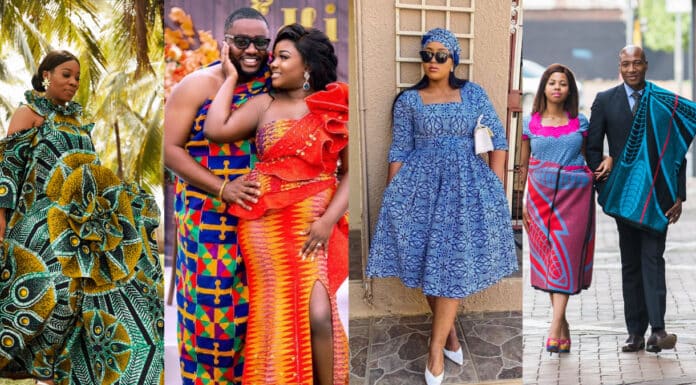African traditional attire is like a beautiful painting in the world of fashion. They are not just outfits; they are like a canvas that tells stories about culture, identity, and heritage.
Come with us on a journey through African fashion, where each piece of clothing has a story and celebrates tradition and diversity. Welcome to the world of traditional African clothes, full of colours, styles, and the beauty of cultural expression.
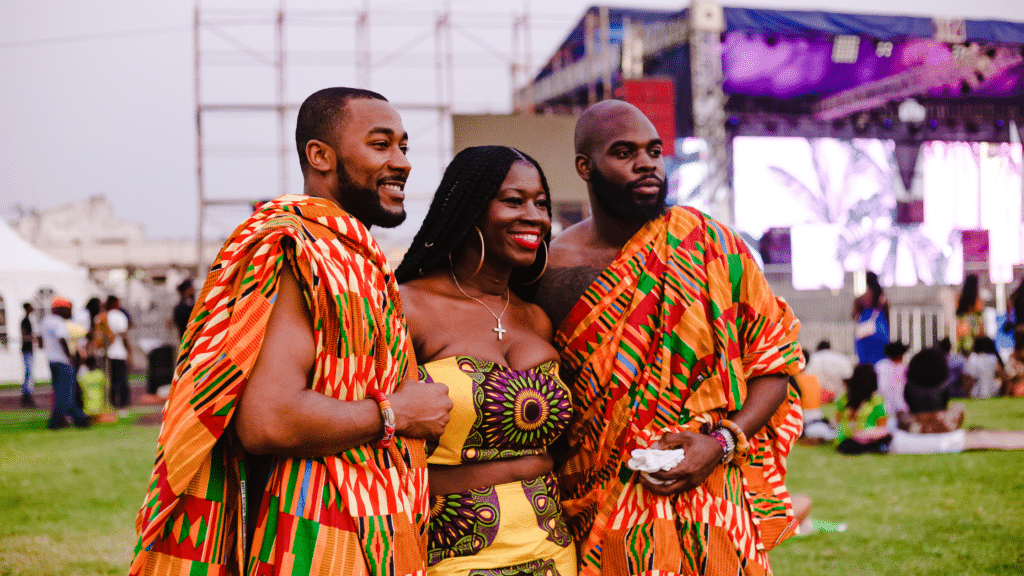
SEE ALSO:
- African Fashion: The History, Significance, Challenges, and Future
- South Africa’s Xhosa culture and traditions
Introduction to African Traditional Attire
African traditional attire is incredibly diverse across the continent, reflecting the rich tapestry of cultures. These garments are usually handmade and hold deep cultural and social significance.
They are known for their vibrant colours, intricate patterns, and unique styles, which often tell a story about the wearer’s ethnic group, region, and the occasion they’re attending.
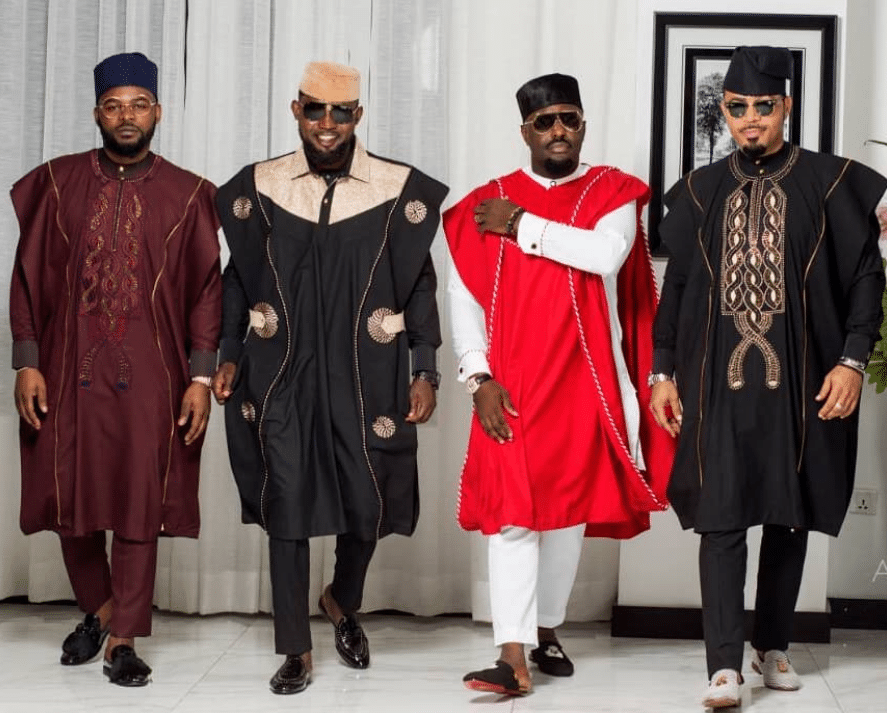
These dresses are more than just clothing; they hold a special place in African culture:
- Cultural Identity: Traditional attire helps people proudly display their cultural roots and heritage. It’s a way of visually showing which ethnic group they belong to.
- Rituals and Celebrations: Different outfits are worn for important life events like weddings, funerals, initiation ceremonies, and festivals. They are an essential part of these traditional rituals.
- Social Status: Some traditional garments are reserved for leaders, elders, or individuals of high social standing. They symbolize authority and respect within the community.
- Communication: The patterns, colours, and accessories on these dresses can convey messages, stories, or symbols that carry cultural or historical meaning.
- Connection to Nature: Many traditional designs incorporate elements from the natural world, such as animals, plants, or celestial bodies. This reflects a deep connection between African cultures and the environment.
- Community Bonds: Making and wearing traditional clothing often involves the cooperation of community members. This strengthens the sense of unity and belonging among them.
How does African Traditional Attire Reflect the Wearer’s Identity?
African Traditional attire serves as a vivid narrative canvas, conveying the wearer’s identity, ethnicity, and social standing through a range of expressions:
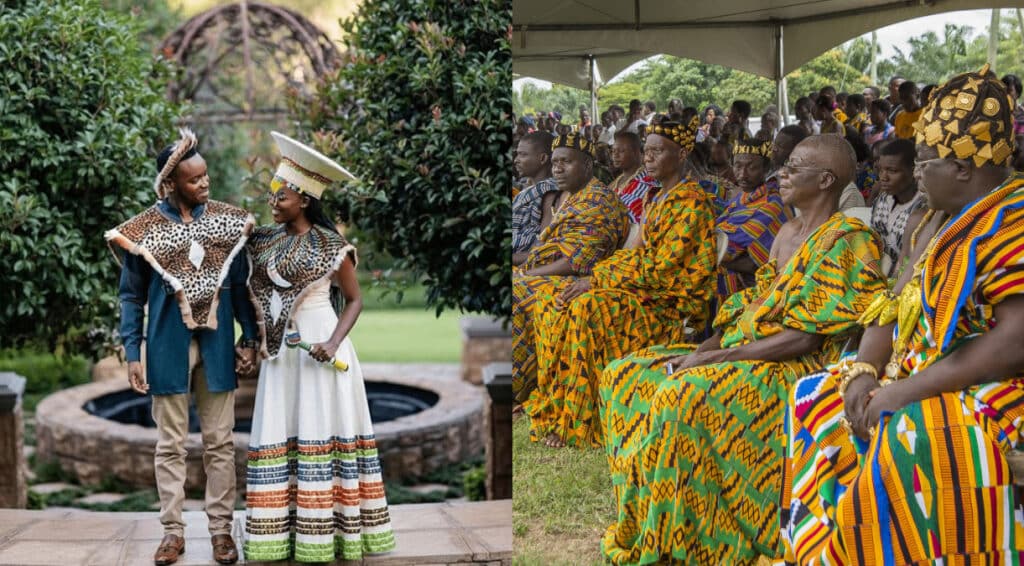
- Ethnicity and Regional Roots: The selection of colours, patterns, and styles in traditional clothing harmonizes with the wearer’s particular ethnic group or geographical origin. For instance, the intricate Kente cloth of the Ashanti people in Ghana and the lively Shweshwe fabric of South Africa distinctly represent specific communities and locales.
- Symbols and Motifs: These garments often incorporate symbols and motifs exclusive to a particular ethnic group or community. These symbols can encapsulate various meanings, encompassing ancestral spirits, proverbs, historical events, and cultural values.
- Colour Significance: Colours carry specific cultural meanings across many African societies. For example, red might signify bravery or spiritual energy, while white could represent purity or mourning. The chosen colours in the attire can convey both personal and cultural significance.
- Designs: The design elements of the attire, including the cut, silhouette, and embellishments, can further reflect the wearer’s identity. Particular styles may be closely associated with specific ethnic groups, and the level of detailing can be exceptionally intricate and distinctive.
- Social Status: Traditional African clothing frequently incorporates markers of social status. For instance, a chief or elder might don a majestic robe adorned with specific embellishments, underscoring their leadership role. The quality of the fabric, the presence of gold or silver threads, or the intricacy of beadwork can all signify one’s position in the social hierarchy.
- Accessories: Additional elements like headdresses, jewellery, or beads offer supplementary insights into the wearer’s identity and social stature. These accessories may hold cultural or symbolic significance, adding layers to the narrative.
- Occasion: The choice of traditional attire for a particular event or celebration can also serve as a means of identity expression. For example, a bride’s wedding ensemble or a warrior’s ceremonial garb is often thoughtfully selected to align with cultural customs and traditions.
READ ALSO: The Melanesians: Blonde African People of the Solomon Islands
Diversity of Traditional Dresses across the African Continent
Africa is an incredibly diverse continent, and this diversity is beautifully reflected in its traditional clothing. African traditional attire varies significantly from one region to another, showcasing the rich history, ethnic tapestry, and unique customs of each area.
It would help if you also kept in mind that in each region, you will find even more unique styles of traditional clothing, influenced by specific ethnic traditions, special events, and individual choices.
African traditional attire isn’t just a way to express culture; it also holds deep historical, social, and symbolic importance. Let’s take a closer look at some of the distinctive traditional dresses from different parts of Africa:
West Africa
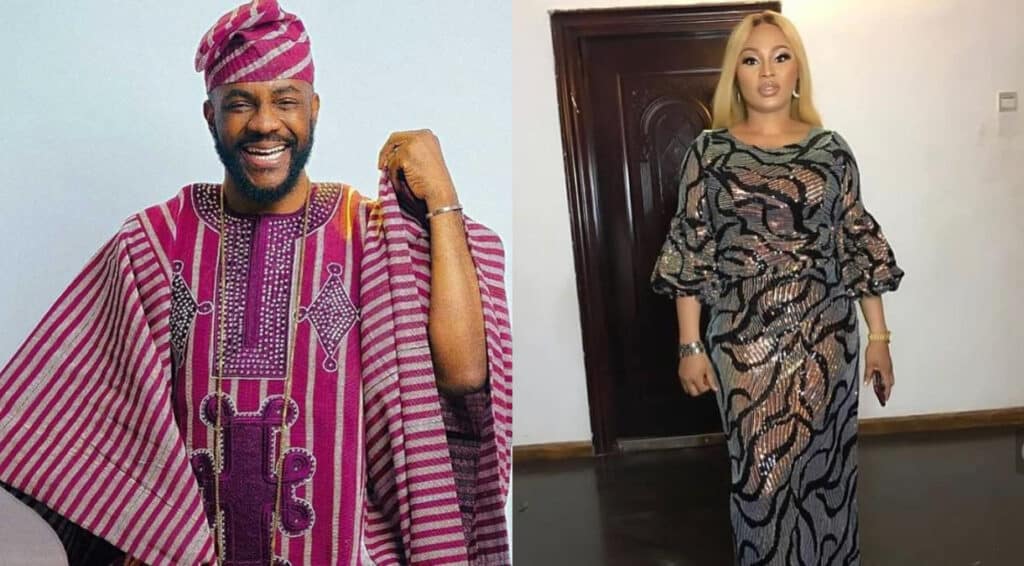
- Agbada: This elegant flowing robe is a favourite among men in West Africa, especially in Nigeria. It features a roomy gown with wide sleeves, often paired with a matching hat (known as fila) and trousers.
- Buba and Wrapper: Women in Nigeria and Yoruba-speaking regions frequently wear this outfit, consisting of a loose blouse (buba) paired with a matching wrapper or skirt.
East Africa
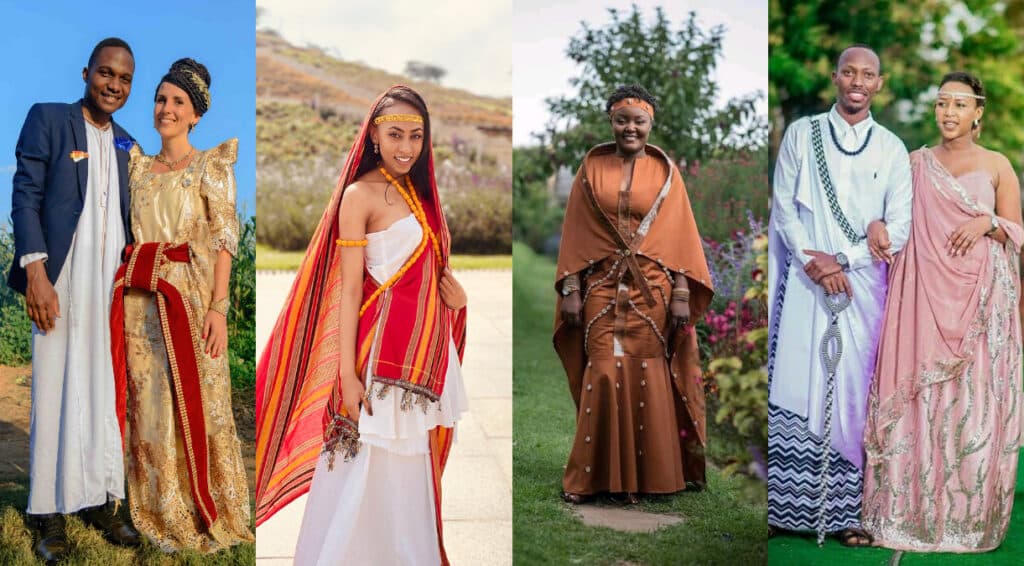
- Kanzu: A long, white robe worn by men in East African countries like Uganda and Tanzania, typically accompanied by a cap called a kofia.
- Kanga: Women in East Africa, particularly in Kenya and Tanzania, adore kangas. These colourful rectangular pieces of fabric often feature Swahili proverbs or messages and are known for their versatility in wrapping styles.
North Africa
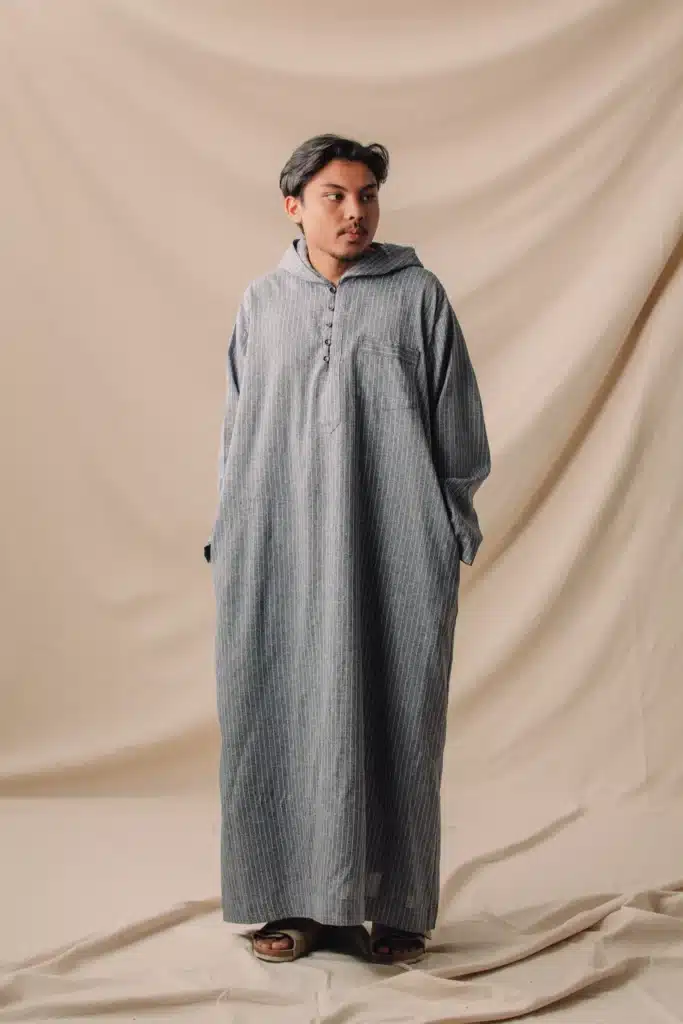
- Djellaba: In North African nations like Morocco, Tunisia, and Algeria, you’ll find the djellaba, a long, hooded robe that can be crafted from various fabrics, including cotton or wool.
- Kaftan: Both men and women across North Africa appreciate the loose-fitting, ankle-length kaftan, adorned with intricate embroidery.
Southern Africa
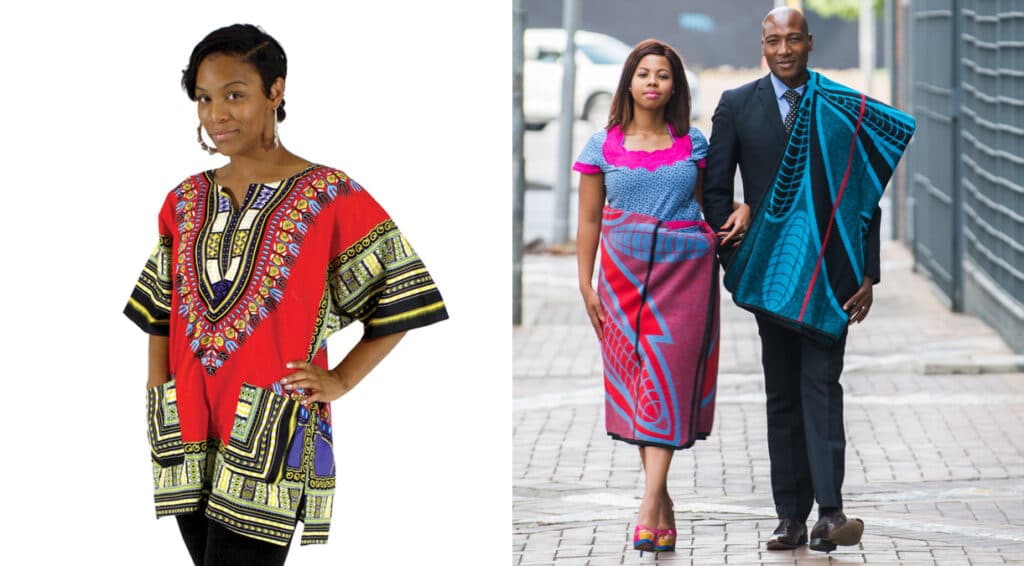
- Dashiki: South Africa and Zimbabwe are known for the dashiki, a loose-fitting shirt or tunic adorned with intricate patterns and embroidery.
- Basotho Blanket: Lesotho boasts the iconic Basotho blanket, made of wool and often worn as a cloak, carrying significant cultural importance.
Central Africa
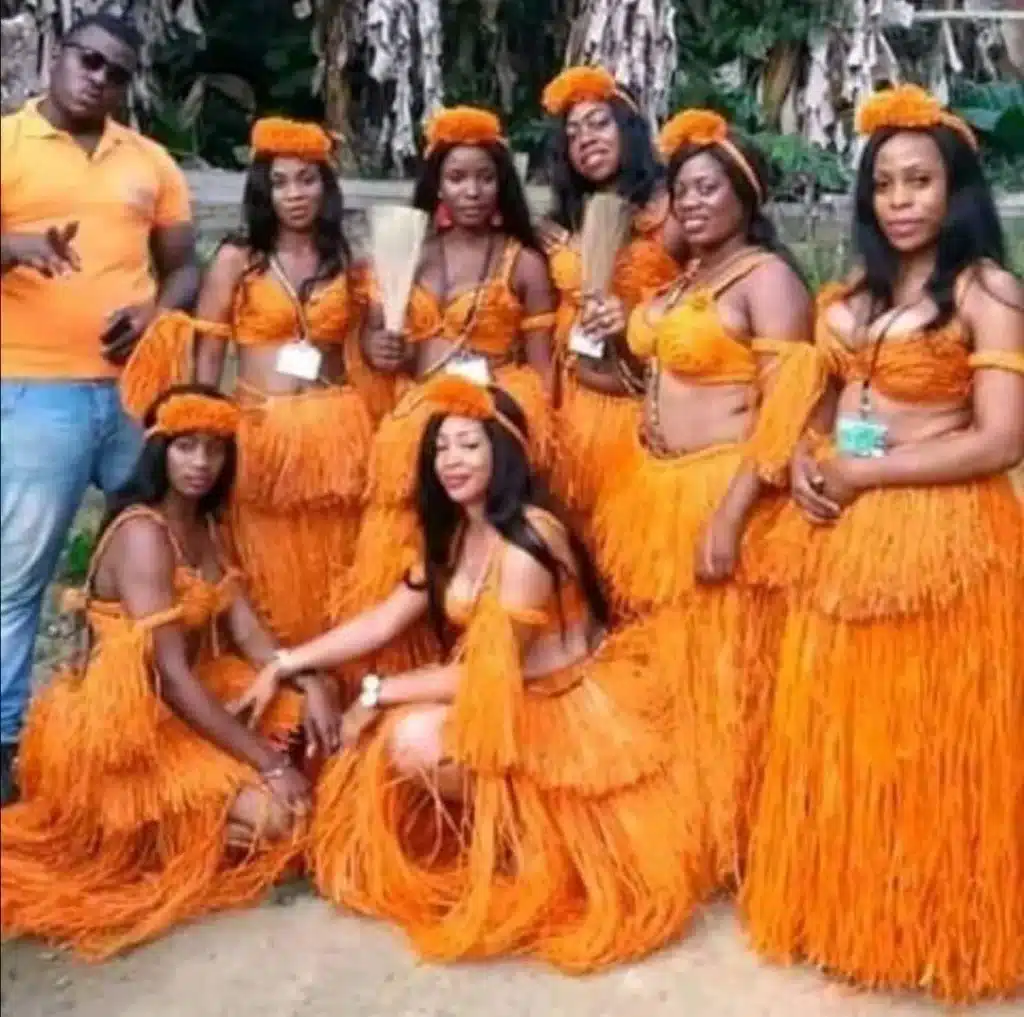
- Grand Boubou: In countries like Senegal and Mali, the grand boubou, a flowing robe with wide sleeves, is popular among men. It’s usually paired with a matching hat or cap.
- Raffia Skirts: Some Central African communities feature women wearing skirts made from raffia palm leaves decorated with vibrant patterns and designs.
These diverse traditional dresses showcase the continent’s rich cultural heritage and celebrate its remarkable variety, adding to the tapestry of Africa’s traditions and identities.
Examples of different styles, fabrics, and colours from various regions
Let’s take a closer look at the incredible variety of styles, fabrics, and colours used in traditional clothing from different parts of Africa:
West Africa
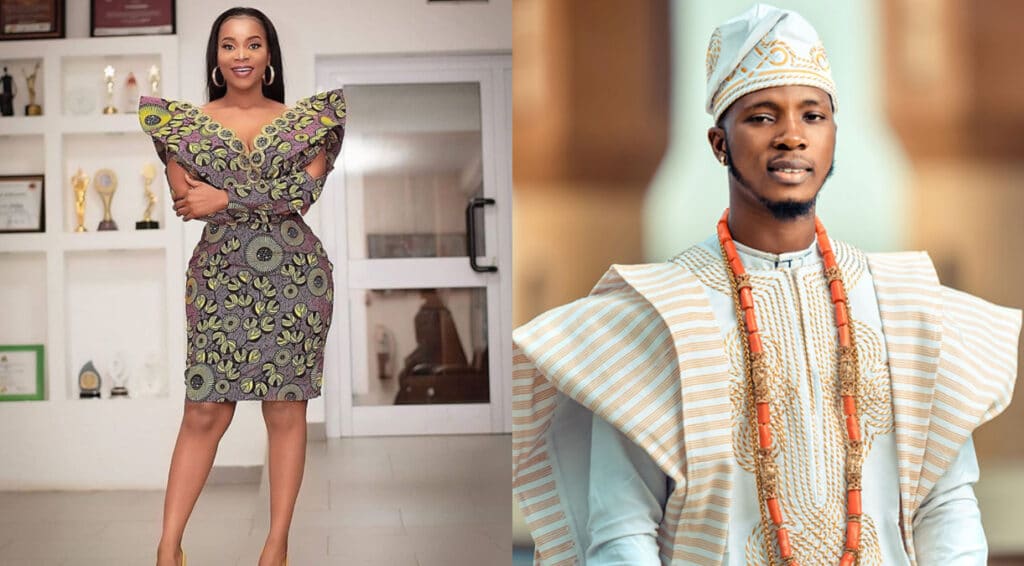
- Styles: In West Africa, we have the Agbada, known for its loose and flowing design with wide sleeves. There’s also the Buba and Wrapper, which combines a loose blouse with a wrapped skirt.
- Fabrics: West African traditional attire often features vibrant and colourful fabrics like Ankara (African wax print) and Aso-Oke, which are intricately patterned and can incorporate a wide range of motifs.
- Colours: When it comes to colours, West African traditional clothing offers a vivid range, including bright reds, blues, greens, and yellows, often adorned with intricate patterns and designs.
East Africa
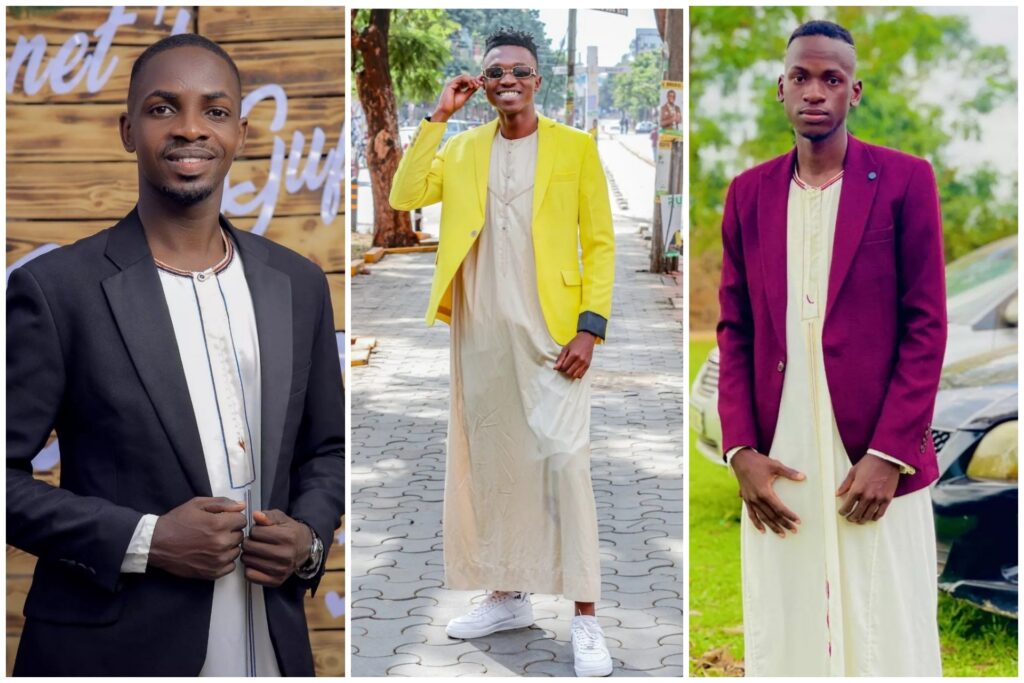
- Styles: In East Africa, you’ll find the Kanzu, a long and simple white robe for men, and the Kanga, a colourful rectangular fabric piece used in various wrapping styles for women.
- Fabrics: Kanzu is crafted from white cotton or linen, while Kanga fabrics are known for their bold and colourful prints, often featuring Swahili proverbs.
- Colours: Kanga fabrics come in a stunning range of colours and patterns, making them a vibrant choice for women’s attire.
North Africa
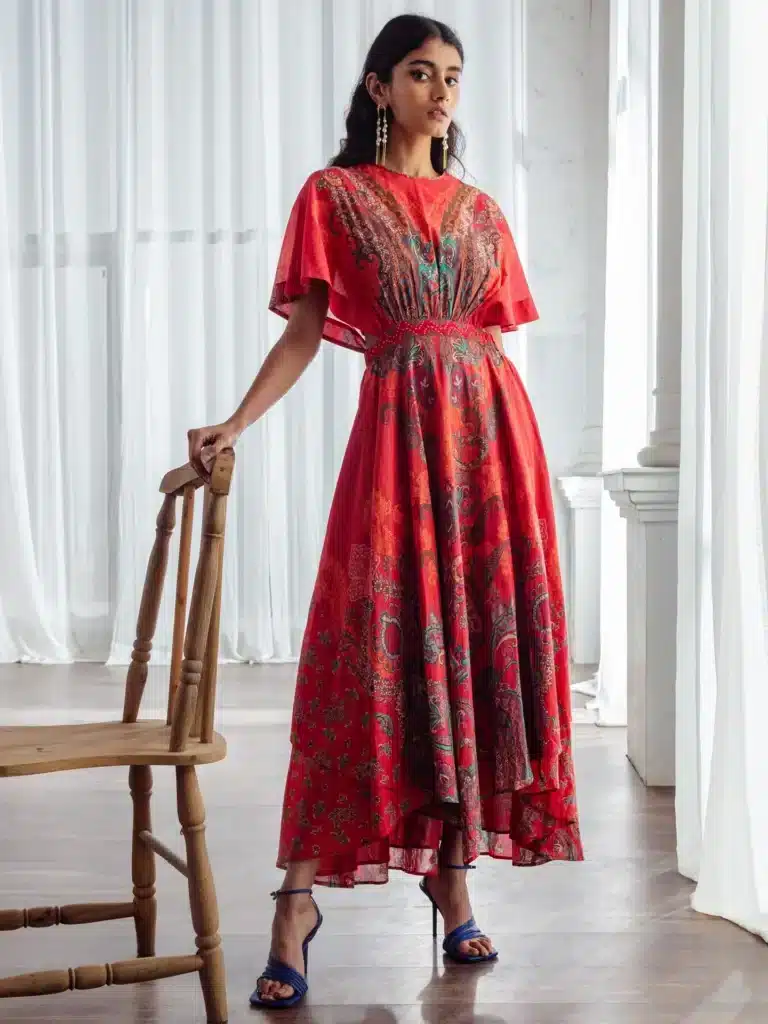
- Styles: Heading to North Africa, we encounter the Djellaba, a long, hooded robe with a loose fit, and the Kaftan, an ankle-length, loose-fitting robe adorned with intricate embroidery.
- Fabrics: Djellabas can be made from cotton or wool, while Kaftans are often fashioned from luxurious materials like silk or satin with ornate embellishments.
- Colours: Traditional clothing in North Africa often features earthy tones such as browns and creams, deep blues, and accents of gold and silver.
Southern Africa
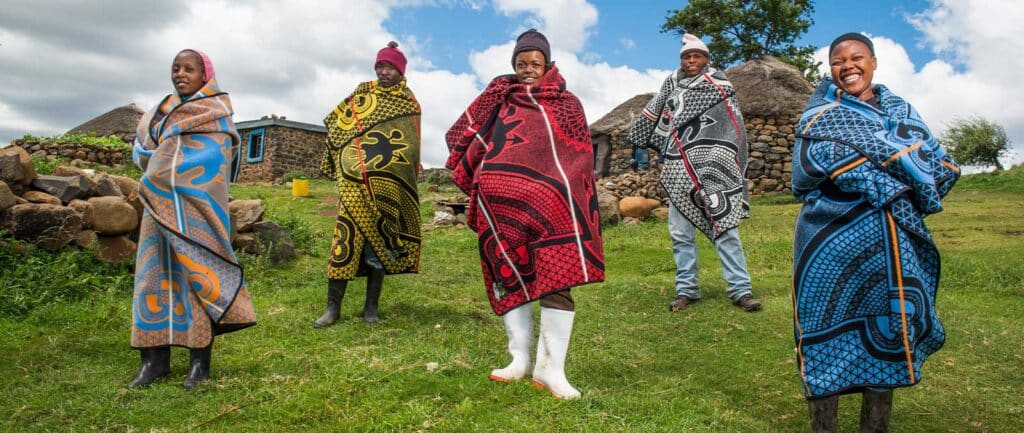
- Styles: In Southern Africa, there are Dashikis, loose-fitting shirts or tunics featuring vibrant patterns, and Basotho blankets, made of thick wool and worn as cloaks.
- Fabrics: Dashikis can be crafted from a variety of materials, including cotton, and often showcase bold geometric designs. Basotho blankets, on the other hand, are known for their robust woolen composition.
- Colours: Dashikis are celebrated for their bright and contrasting colours, while Basotho blankets come in various shades, including striking reds, blues, and yellows.
Central Africa
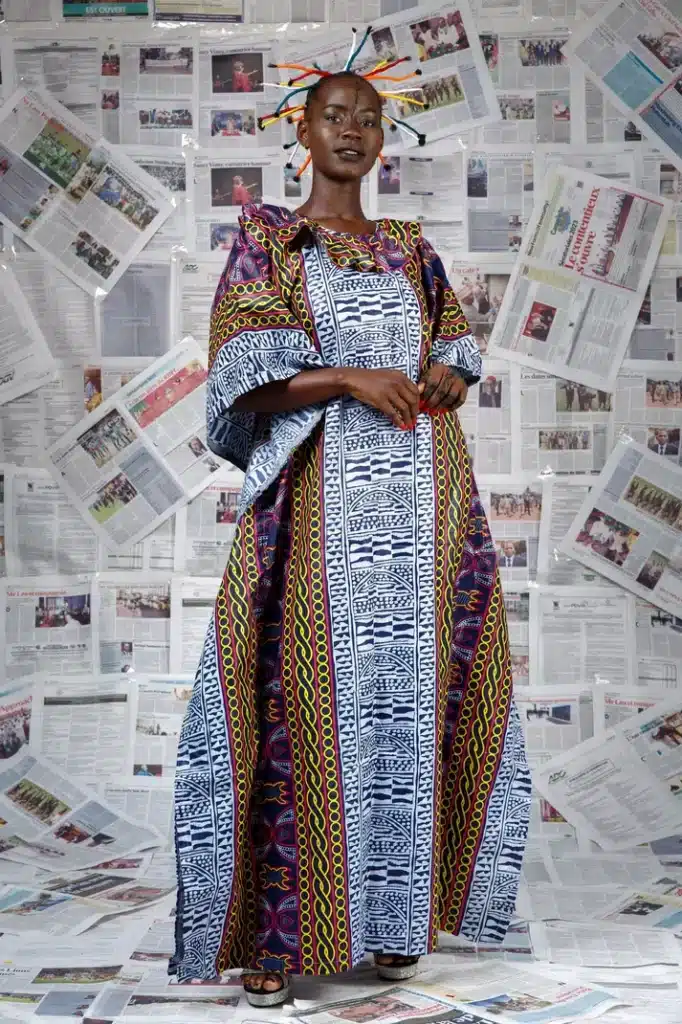
- Styles: Central Africa brings us the Grand Boubou, a flowing robe with wide sleeves, and Raffia Skirts, made from natural raffia palm leaves.
- Fabrics: Grand Boubous are frequently made from lightweight cotton or silk, while Raffia Skirts embrace natural raffia fibres for a rustic appearance.
- Colours: Central African attire may feature earthy tones and vibrant, natural colours like greens and browns for Raffia Skirts.
READ ALSO: Discover the spectacular traditional clothing and ornaments of the Zulu people
Significance of Specific Fabrics
These fabrics, like Ankara, Kente, and Mudcloth, aren’t just pieces of cloth; they’re woven with the threads of culture and history, each carrying its unique tale, symbols, and significance. They’re like chapters in the story of Africa, telling us about the heritage and values of the people who have embraced them through the ages.
Take Ankara, for instance – this vibrant African Wax Print, also known as Dutch wax print, isn’t just about its bold and colourful patterns. It’s a cultural icon celebrated across West and Central Africa, especially in countries like Nigeria, Ghana, and Senegal.
Its history is as intricate as its designs – originally inspired by Indonesian batik fabric, it found its way to the African market through Dutch traders in the 19th century, eventually becoming an integral part of African fashion.
Ankara patterns aren’t just random; they often carry motifs that convey messages, beliefs, and cultural stories. The specific combinations of patterns and colours can symbolize events, social status, or personal values.
From everyday wear to special occasion outfits, Ankara fabric weaves itself into the fabric of African life, adorning not just people but also accessories and home decor.
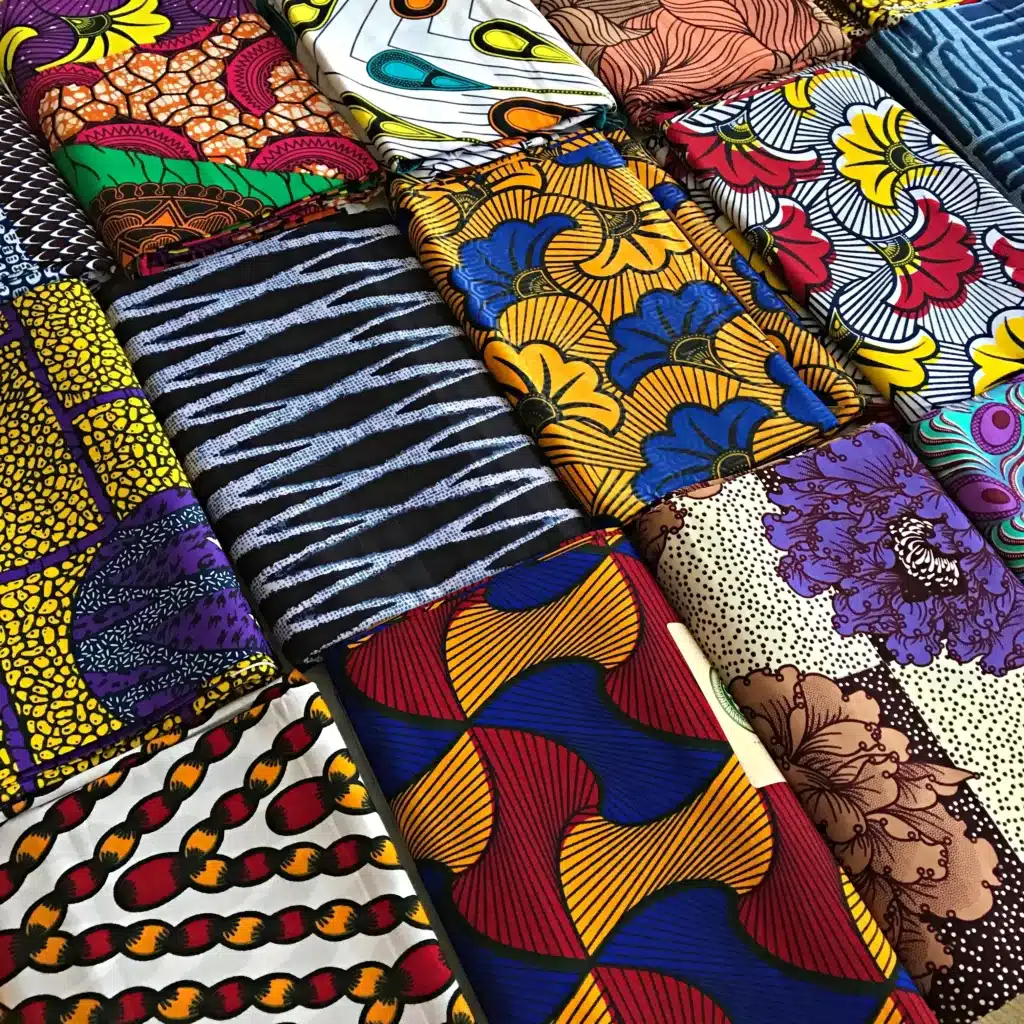
Kente cloth is a special African fabric loved, especially by the Ashanti and Ewe people in Ghana and Togo. It has a long history, dating back to the 17th century. Originally, it was only for important events and royalty.
But Kente isn’t just cloth; it’s like a language made of symbols. The patterns and colours on Kente have meanings like wisdom, bravery, leadership, and unity. It’s not just about looking good; Kente often tells stories and sends messages.
That’s why people use Kente for big life events like weddings and funerals. They choose patterns and colours to share specific messages or mark important moments.
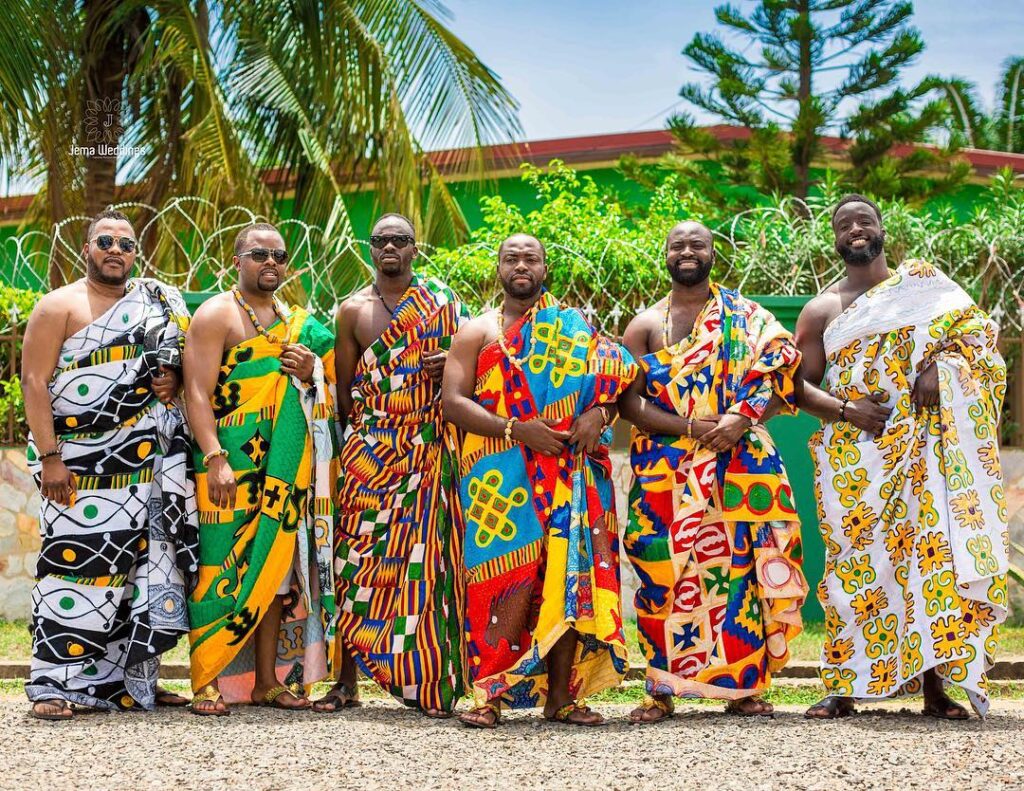
And finally, there’s Mudcloth, or bogolanfini, a traditional fabric from West Africa, closely associated with the Bambara people of Mali. Mudcloth isn’t just about its earthy appearance; it’s a piece of ancient history.
Historically used by African hunters and warriors, it undergoes a labour-intensive process involving natural pigments and mud for dyeing. Mudcloth’s abstract geometric patterns make it fascinating, each carrying symbolic meanings linked to the natural world, human life, and spirituality.
Beyond patterns, Mudcloth can also tell stories and convey cultural values. It’s not just fabric; it’s an authentic and earthy aesthetic that has gained global popularity. Whether it’s clothing, blankets, or home decor, Mudcloth brings a touch of Africa’s rich heritage to the world.
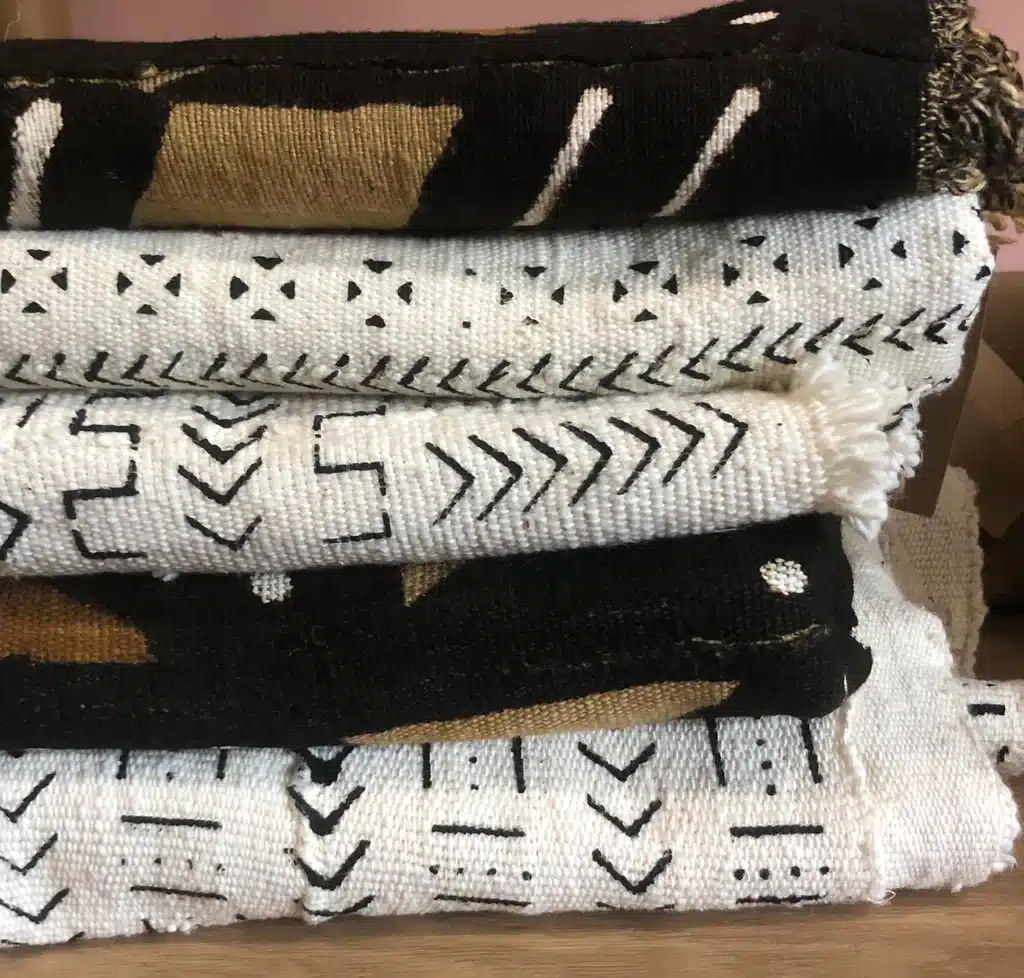
READ ALSO: Revealing Africa’s role in shaping global pop culture trends
Influence of African Traditional Dresses on Modern Fashion Trends Globally
African traditional dresses have left an impressive mark on today’s fashion scene in many exciting ways:
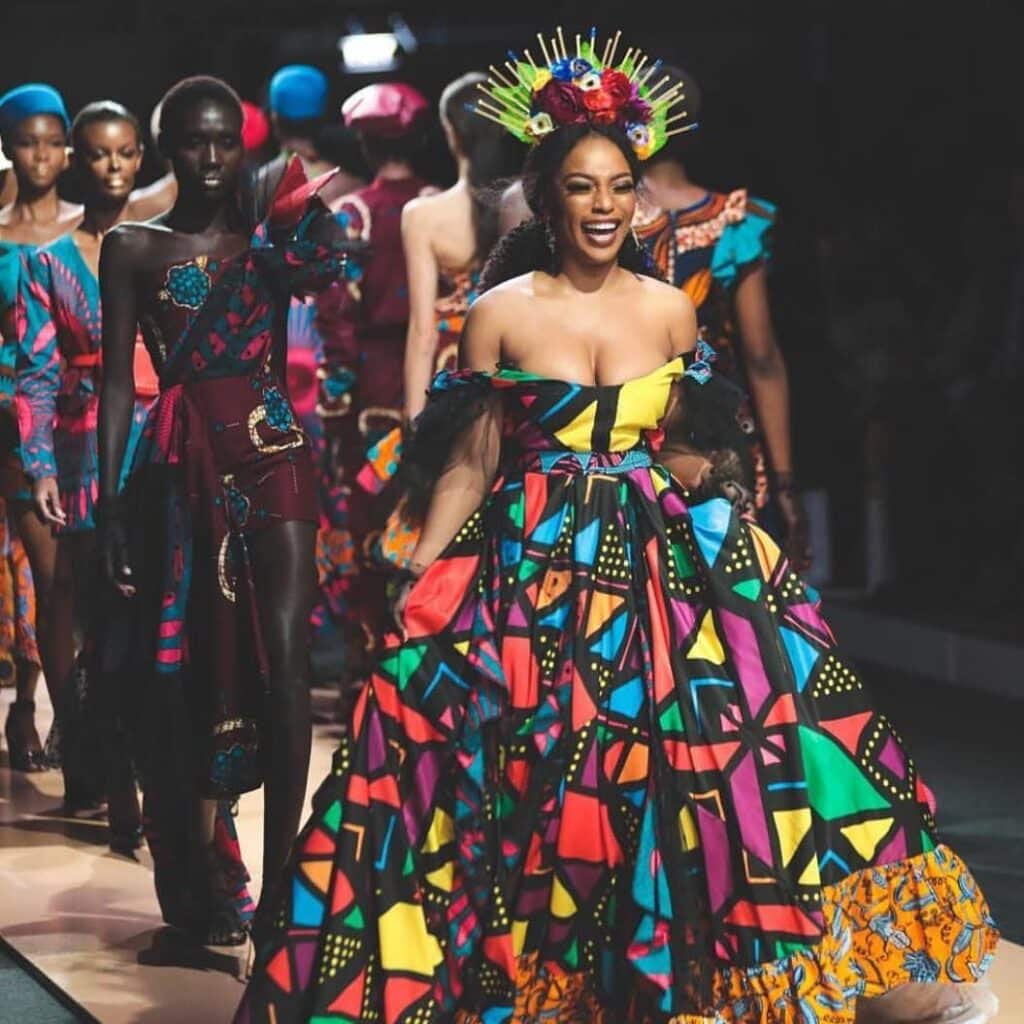
- Bold and Vibrant Prints: Think of the striking patterns and colours found in fabrics like Ankara and Kente. These eye-catching designs have found their way into mainstream fashion, inspiring designers worldwide. Nowadays, you can spot African-inspired prints not only in clothing but also in accessories and home decor. These prints are all about adding a pop of vibrant style to our lives.
- Celebrating Culture: African traditional attire is a vibrant celebration of the diverse cultures across the continent. In our globalized world, where we appreciate and respect the beauty of different traditions, wearing African-inspired clothing has become a way to honour and embrace African heritage. People from all walks of life now eagerly adopt African fashion as a form of cultural exchange and a nod to the continent’s rich legacy.
- Cross-Cultural Fusion: African traditional clothing has bridged cultural boundaries in fashion. Designers and fashion houses worldwide have taken inspiration from African styles, weaving them into their collections. This fusion has given rise to unique and eclectic fashion statements that blend African aesthetics with influences from Western, Asian, and other global sources.
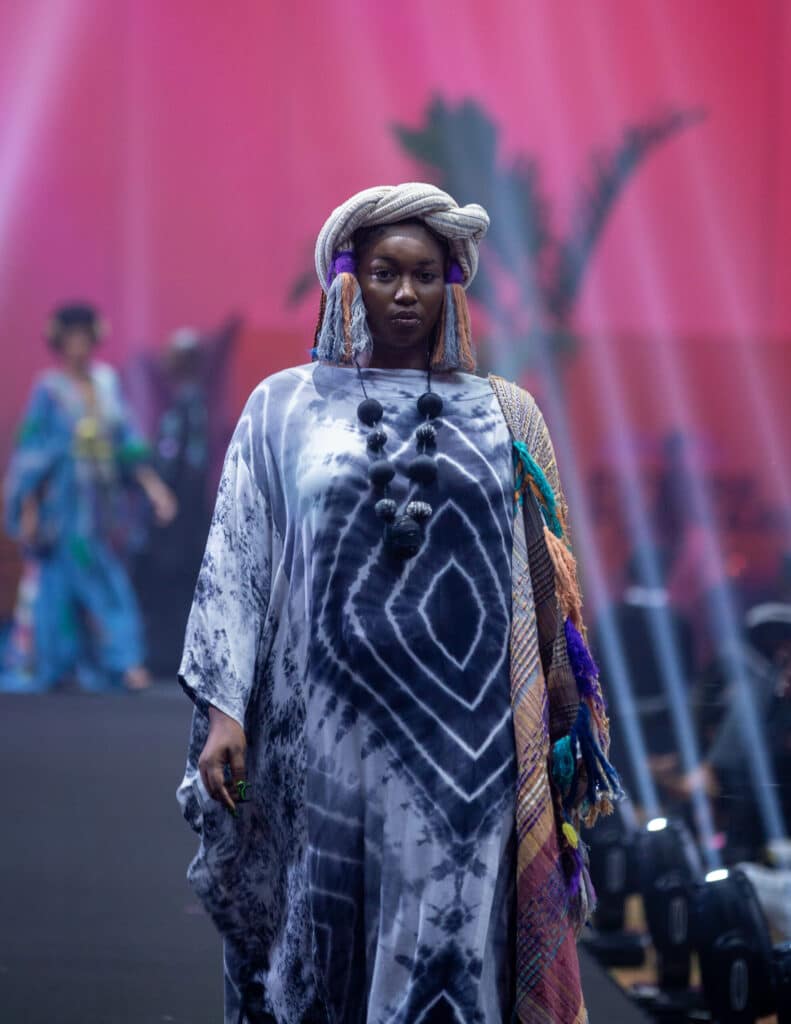
- Empowerment and Identity: African fashion is all about self-expression and pride. Many African diaspora communities use traditional African clothing to reconnect with their roots and express their heritage. The popularity of African-inspired fashion has also fostered a sense of identity and belonging for individuals within these communities.
- Global Runways: African fashion designers and brands have gained international recognition, strutting their stuff on the global runways. Events like “African Fashion Week” have become prominent platforms for African designers to showcase their creativity to a worldwide audience. This exposure has catapulted African fashion into the mainstream, shaping fashion trends along the way.
- Inclusivity and Representation: Today’s fashion world recognises the importance of inclusivity and representation. African traditional attire and styles are celebrated for their versatility, offering various options for people of different body types, ages, and gender identities. This inclusivity resonates with the evolving values of the fashion industry.
READ ALSO: 7+ Native Styles for Men (2023): Latest African Men Fashion
Tips for Wearing African Traditional Dresses
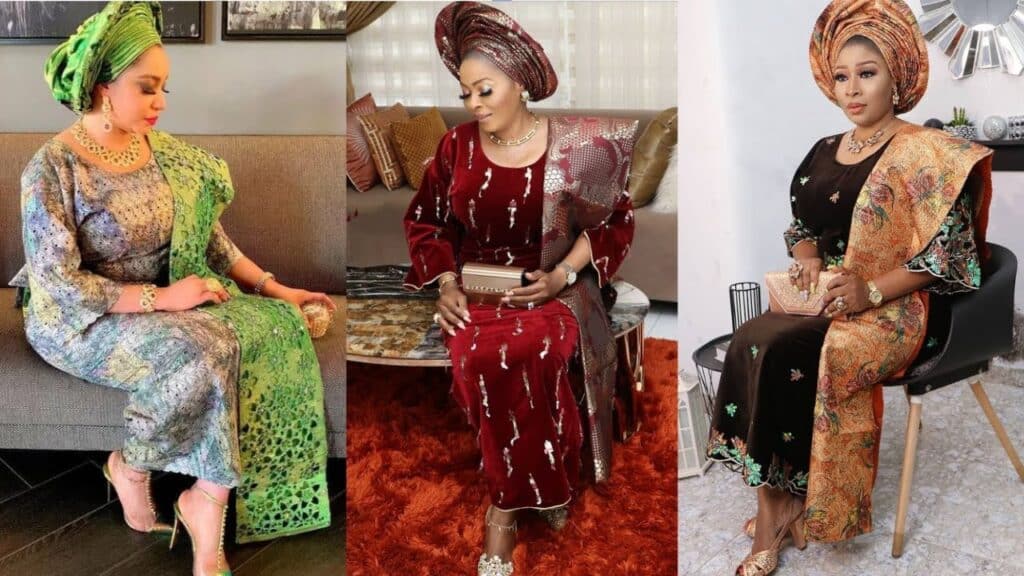
- Pick the Perfect Outfit for the Occasion
Think about the event before picking your attire. Some traditional dresses are dressier, ideal for weddings or ceremonies, while others are more casual for everyday wear.
- Accessorize with Care
Traditional African dresses often pair well with accessories like beads, headwraps, scarves, and jewellery. Select accessories that elevate your outfit, but don’t go overboard. It’s all about finding the right balance.
- Learn to tie Gele or Headwrap
Gele, the beloved African headwrap, can elevate your look. If your outfit features a headwrap, take the time to learn different styles for that extra touch of elegance.
- Prioritize the Fit
Make sure your traditional dress fits just right. Whether it’s a flowing gown, a wrap skirt, or a fitted top, the perfect fit can greatly impact your comfort and confidence.
- Confidence is important
Rock your traditional attire with confidence! Your comfort and self-assurance will not only enhance your overall look but also leave a positive impression.
READ ALSO: Is Juju Magic Real? Attempting To Uncover The Truth Behind African Magic
Conclusion
As we wrap up our journey through the vibrant world of African traditional attire, it is evident that these garments are not just fabrics; they are living stories, a testament to the rich cultural heritage that thrives across the continent.
African traditional attire is like unique paintings. Each thread and colour tells a story about a person – their roots, beliefs, and where they fit into their culture. It’s not just about covering up; it’s about showing who you are.
Exploring traditional dresses, we were amazed by the different styles, fabrics, and colours. From the north’s deserts to the south’s jungles, each region and community has its own story, adding to the diversity of African fashion.
From the bold Kente cloth of West Africa to the intricate beadwork of the Maasai fabric in the East, we have witnessed the significance of specific fabrics. These materials aren’t chosen at random. They carry the weight of tradition, symbolizing history, spirituality, and societal roles.
And for those considering donning African traditional attire, our tips offer a guide to embracing these garments with respect and authenticity. Because wearing them is not just about fashion; it’s about honouring a heritage, respecting cultural nuances, and becoming part of a global celebration of diversity.
So, as we come to the end of this exploration, let’s carry with us the beauty of African traditional attire. It is a celebration of identity, a testament to diversity, and a reminder that every thread is a story waiting to be told.
FAQs About African Traditional Attire
What is the history behind African Traditional Dresses?
African traditional attire tells a rich story of culture, history, and identity across centuries. Long before global fashion trends, these garments were a language, expressing cultural identity and heritage. Different regions developed unique styles, like the vibrant kente cloth of the Ashanti people or the iconic red shuka of the Maasai. Traditional attire isn’t static; it evolves, blending with modern styles in urban centres. Beyond aesthetics, these dresses are functional, reflecting climate and daily life. Globally, there’s a growing appreciation for African fashion, with these garments gracing international runways. In essence, they are more than clothing; they are history, culture, and symbols of resilience, preserving the diverse heritage of the continent.
Is there a specific dress code associated with African Traditional attire?
African traditional attire boasts a diverse range of styles, varying among the continent’s cultures. While there isn’t a universal dress code, certain common elements stand out.
1. Symbolism Rules: Many outfits carry rich symbolism, with patterns, colours, and accessories conveying messages about a person’s role, tribe, or special events like weddings.
2. Colours That Pop: Vibrant and bold colours are a staple in African traditional attire. Each colour often holds a specific meaning, expressing joy, wealth, spirituality, or even mourning.
3. Fabric Patterns: Fabrics are adorned with intricate patterns, from geometric shapes to symbols with deep cultural significance. In Ghana, Adinkra symbols are a prime example.
4. Fabric Feast: Traditional attire showcases a variety of fabrics, each with cultural and regional significance. The Ashanti people’s Kente cloth and West Africa’s Ankara fabric are just a glimpse into the textile diversity.
What are some popular African Traditional dress patterns and motifs?
Beadwork is a popular theme in many African traditional attire. You will find intricate bead patterns jazzing up jewellery, headpieces, and clothing decorations. These beads can tell tales about social status, identity, or cultural meanings.
1. Aso-oke stripes: (straight out of Yoruba, Nigeria). Aso-oke is a cool, handwoven fabric rocking bold stripes and patterns. Those stripes aren’t just for show; they carry cultural significance. Certain designs might even be party animals, showing up for special events and ceremonies.
2. Kitenge and Ankara Prints: Kitenge and Ankara are vibrant wax-printed fabrics widely used in many African countries. The prints often feature bold, colorful patterns, from florals and geometrics to abstract designs. These fabrics are versatile and are used for various types of clothing.



